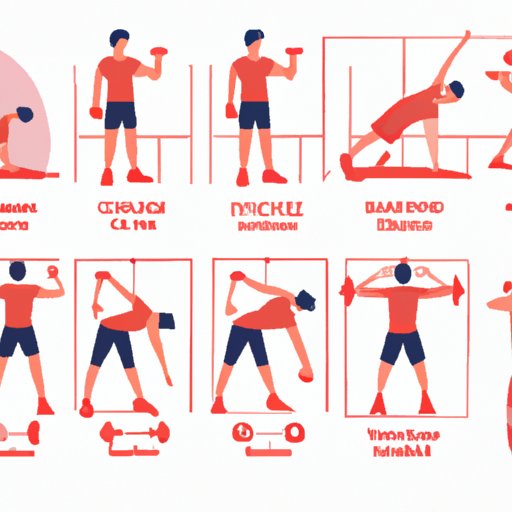
Introduction
There’s no denying the importance of exercise for our overall health and wellbeing. However, the question remains whether or not we should exercise every day. In this article, we will explore the benefits and drawbacks of daily exercise, the science behind it, and offer tips on how to create a sustainable workout routine.
The Benefits and Drawbacks of Exercising Every Day
Regular exercise has numerous physical and mental health benefits, including improved cardiovascular health, reduced risk of chronic disease, and enhanced mood. Daily exercise can also improve overall fitness and prevent weight gain.
However, it’s essential to recognize the risks of over-exercising, which can lead to injury, burnout, and negative effects on mental health. Pushing our bodies to the limit every day can put a serious strain on our muscles and body, leading to exhaustion and decreased motivation to continue exercising.
How to Create a Sustainable Workout Routine
The key to daily exercise is to create a workout routine that is both challenging and sustainable. This includes setting realistic goals, making sure to include rest days and cross-training, and choosing exercises that you enjoy and are suitable for your fitness level.
Rest days are crucial for preventing injury and improving overall fitness. They give your body time to recover and repair muscles, which leads to better performance during your next workout. Cross-training, such as incorporating yoga or swimming into your routine, can also help prevent burnout and prevent injury.
Finally, it’s important to create a workout routine that fits your lifestyle and goals. Find a time of day that works for you, mix up your routine to prevent boredom, and be open to trying new exercises or routines.
The Science Behind Daily Exercise and Its Effects on the Body
Studies have shown that exercise has numerous health benefits, including improved cardiovascular health, immune function, and mental health. Daily exercise can help reduce the risk of chronic diseases such as diabetes and cardiovascular disease and can even improve cognitive function and memory.
These benefits are achieved through a combination of cardiovascular exercise, strength training, and stretching. Consistency is key to achieving these benefits, and it’s recommended to exercise at least 30 minutes per day, five days per week.
The Benefits of Rest and Recovery Days
Rest and recovery days are essential for overall health and fitness. They help prevent injury, enhance muscle growth, and improve overall performance.
During rest days, your body recovers and repairs muscles, reducing the risk of injury and improving stamina during your next workout. It’s recommended to take at least one or two rest days per week and to not over-exercise during the other days.
Daily Exercise for Different Age Groups
Children, teenagers, adults, and older adults all have different exercise needs, and it’s essential to tailor your workout routine to your age group and fitness level.
Children and teenagers should focus on a combination of cardiovascular exercise and strength training, with an emphasis on play and physical activity. Adults should aim for at least 30 minutes of daily exercise, including a combination of cardio and strength training. Older adults should focus on low-impact exercises such as swimming and yoga, and balance and flexibility training to prevent falls and injury.
Conclusion
In conclusion, daily exercise has numerous physical and mental health benefits, but it’s important to recognize the risks of over-exercising. To create a sustainable workout routine, make sure to include rest days, cross-training, and exercises that you enjoy and are suitable for your fitness level. Remember that different age groups have different exercise needs, so tailor your routine accordingly. By creating a sustainable workout routine that works for your lifestyle and goals, you can achieve overall health and wellness and improve your quality of life.





